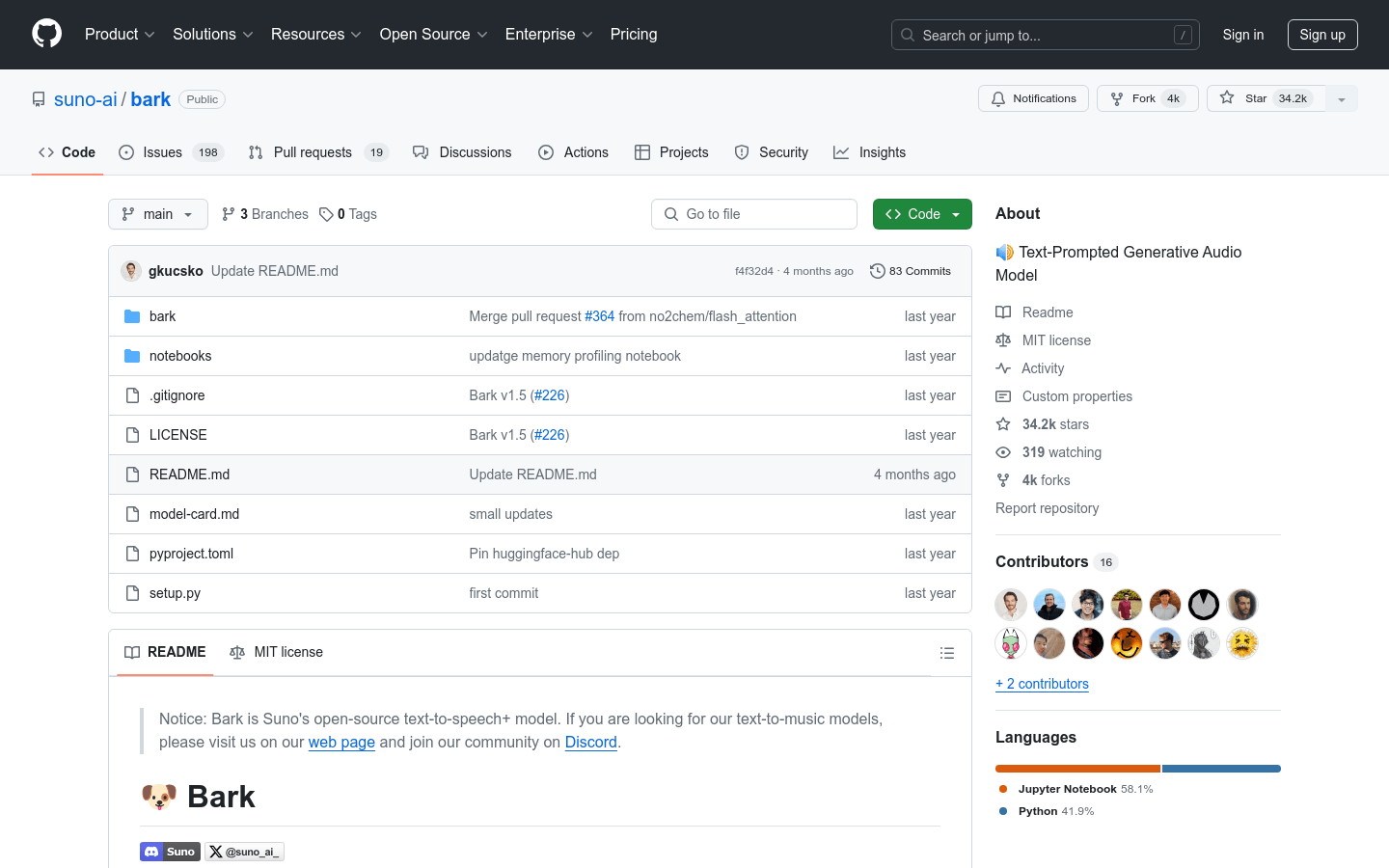

Bark
Overview :
Bark is a Transformer-based text-to-audio model developed by Suno, capable of generating realistic multilingual speech and other audio types, such as music, background noise, and simple sound effects. It also supports generating non-verbal sounds like laughter, sighs, and cries. Bark is resource-friendly for the research community, providing pre-trained model checkpoints suitable for inference and commercial use.
Target Users :
Bark's target audience includes researchers, developers, and anyone in need of text-to-audio conversion capabilities. It is particularly suited for applications requiring the rapid generation of speech or sound effects, such as voice assistants, e-learning content, audiobooks, or any multimedia projects.
Use Cases
Generate a voice history introduction with a specific accent using Bark
Create a welcoming message featuring laughter with Bark
Directly convert text prompts into music or sound effects
Features
Generate realistic multilingual speech
Support for generating music, background noise, and simple sound effects
Automatically recognize the language from input text
Support for over 100 voice presets
Enable long audio generation
Run on both CPU and GPU with varying hardware requirements
How to Use
1. Install the necessary libraries and the Bark model.
2. Use the `preload_models()` function to download and load all models.
3. Generate audio from text prompts using the `generate_audio()` function.
4. Save the audio to disk using the `write_wav()` function.
5. Play the generated audio in Jupyter Notebook using the `Audio()` function.
6. Choose different voice presets or adjust model parameters as needed to optimize the output.
Featured AI Tools

GPT SoVITS
GPT-SoVITS-WebUI is a powerful zero-shot voice conversion and text-to-speech WebUI. It features zero-shot TTS, few-shot TTS, cross-language support, and a WebUI toolkit. The product supports English, Japanese, and Chinese, providing integrated tools such as voice accompaniment separation, automatic training set splitting, Chinese ASR, and text annotation to help beginners create training datasets and GPT/SoVITS models. Users can experience real-time text-to-speech conversion by inputting a 5-second voice sample, and they can fine-tune the model using only 1 minute of training data to improve voice similarity and naturalness. The product supports environment setup, Python and PyTorch versions, quick installation, manual installation, pre-trained models, dataset formats, pending tasks, and acknowledgments.
AI Speech Synthesis
5.8M

Clone Voice
Clone-Voice is a web-based voice cloning tool that can use any human voice to synthesize speech from text using that voice, or convert one voice to another using that voice. It supports 16 languages including Chinese, English, Japanese, Korean, French, German, and Italian. You can record voice online directly from your microphone. Functions include text-to-speech and voice-to-voice conversion. Its advantages lie in its simplicity, ease of use, no need for N card GPUs, support for multiple languages, and flexible voice recording. The product is currently free to use.
AI Speech Synthesis
3.6M









